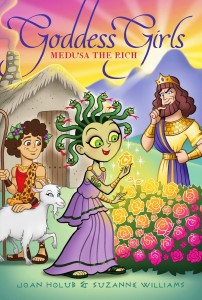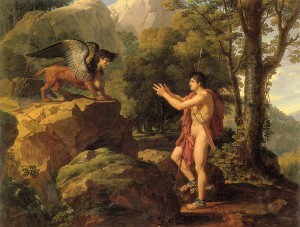Two weeks ago, I cleaned off some of my bookshelves because we were shifting furniture around. One of the shelves, a round table made from wire spools by my grandfather, was in sore need of dusting.

The table holds a collection of classics from my youth and adulthood that I have kept because each formed the woman you now see before you. I could no sooner part with them than one of my limbs. I did find one book I had forgotten I owned. It is a slim regency romance by Elizabeth Mansfield called Her Man of Affairs.

I will give you a few minutes to absorb the beauty that is that cover. See how she gently touches his hand and leans over his shoulder? Classic! It was enough to make me squee with anticipation.
Someone of my acquaintance found this on their bookshelf and bequeathed it to me knowing what a soft spot I have for regency romance. My intention was to read it poste haste, but life got in the way and it was tucked amidst my classics. When I rediscovered it, I knew I had waited long enough.
It was predictable (every genre has some predictableness, so don’t be too judgey) but it was absolutely delightful. It reminded me of all the reasons I love romances. Here are a few I would like to share:
Reason #1 – In most romances the women are powerful. Not power in the traditional sense, though that can happen, but they have intellectual prowess, they have emotional power over themselves, they are damsels that rescue themselves, or they understand their sexuality (or they come to in the course of the book). I love a strong heroine who admits when she is wrong or when she admits she needs the hero’s help to accomplish a task. This is not to say the hero does not have power. He often does, but he does not beat the heroine down, literally or figuratively, to maintain his power. If he does start out that way, woe to him as he learns the error of his ways and then must commence with the grovelling. The best romances involve some team work between the H/H (hero and heroine). Which brings me to …
Reason #2 – Cooperation. Life is all about compromise and working together. Romances show this in romantic relationships. Too often, in real life, we think that being in a relationship is what the other person has to offer us, not what we can do for the other people in our lives. Relationships are about service to others, not what we are getting from them. In romances, this give and take is something the H/H have to negotiate as their relationship develops. Other genres show this kind of compromise and cooperation too, but nothing is more intimate than the relationship you have with a life partner. The depth of selfless giving is greater because this is a person you can not escape, even on your worst days or theirs.
Reason #3 – Everything is better with a little sexual tension, kissing, romance, and *ahem* other things. As a female reader, I have found a lot of traditional scifi and fantasy (read stuff written by men and mostly for men) as boring and dry. You know why? Because it rarely includes romance and there is romance in real life. People are attracted to each other, especially when crammed into tight quarters or in high risk situations. A book with a group of people going on a quest where none of them ever feels any emotions for the other people in the group is weirdly asexual to me.*
Reason #4 – Everything is a little more fun with kissing.
Reason #5 – I admit it. I like happy endings. I like reading about people finding peace and a partner. Who doesn’t want that?
So tell me: Do you like a little romance in your stories? Why or why not?
*It should be noted, that some people, my engineering husband for one, think that emoshuns ruin good stories. Your opinion is your own.




![By Ad Meskens; sculpture Antonio Canova (Own work) [CC BY-SA 3.0 (http://creativecommons.org/licenses/by-sa/3.0) or GFDL (http://www.gnu.org/copyleft/fdl.html)], via Wikimedia Commons](http://wanderingeyre.com/wp-content/uploads/2015/07/Metropolitan_canova_perseus_medusa_02.jpg)



